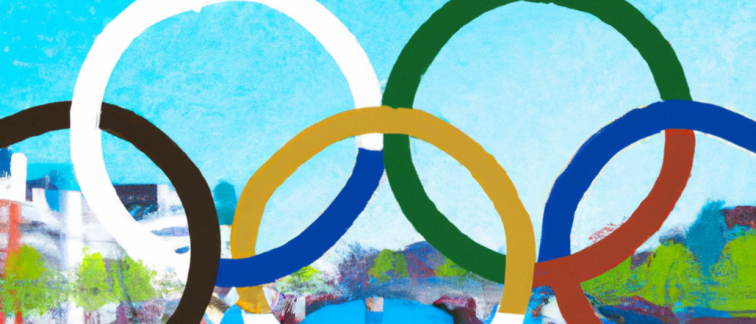Every four years, the International Olympic Committee (IOC) selects partners from around the world to foster cooperation, develop research programs and strengthen research results. Until the end of 2026, the ACHSS (which is part of Amsterdam UMC) gets to display the five Olympic rings again. Fairly special, because in the whole of Europe there are only three academic Olympic study and research centers, worldwide there are eleven.
APH researcher Evert Verhagen, professor of Epidemiology of Sports, Physical Activity & Health at Amsterdam UMC, president of the ACHSS together with Gino Kerkhoffs, is proud: "The rings are a sign of recognition of the work we do, in the areas of care, education and research all at once." And like Kerkhoffs, Verhagen sees this as a starting point and believes that "society can benefit most from this."
Unique status
Amsterdam UMC's status as a university hospital, a place where education, research and treatment come together, is unique among IOC research centers. "It is not uncommon to see a professional athlete rehabilitating next to a cancer patient or next to a patient who is rehabilitating after traumatic injury," Kerkhoffs said. In his experience, this has benefits for both the patient and the IOC: patients "get an extra dose of motivation," and for the IOC, it means that the results of injury prevention research can be applied directly to people with a history of injury.
Injury prevention is central to Verhagen's work and can be applied to the recreational runner as well as to the 100-meter sprinter at the Olympics: "The body of a professional athlete allows us to examine how far the body can go, and this gives us the opportunity to develop guidelines that suit everyone." This research is also being conducted with other IOC research centers. For example, guidelines are being developed for how to return to sports after an ankle sprain - the most common sports injury among both pros and amateurs - or by researching how to perform better cardiovascular screening. A development that may have implications for both professional athletes and the general public.
The importance of recognition
The competence of the ACHSS is only emphasized by the IOC recognition, and for Verhagen - although of course the rings are "nice to hang on the wall" - this recognition is most important. It allows the research center to address questions of a transdisciplinary and multidisciplinary nature, simply by showing other institutions the work being done in Amsterdam.
It also offers advantages for recruiting researchers; the ACHSS has grown from 33 to 105 researchers since its initial IOC recognition in 2016. In Kerkhoffs' view, the ACHSS has thus become its own version of the Olympics: "Everyone wants to participate, but only so many people fit in." Increases in staff inevitably also lead to more research.
Social impact
According to Kerkhoffs and Verhagen, research aimed at the broader society can have a lot of impact. In the Netherlands, half the population is overweight and more than half of Dutch adults do not exercise enough. Although the Dutch perform better than the EU average of 53% and 70% in both cases, getting and keeping people moving is crucial for public health. Not only in terms of healthcare costs, but also by contributing to an increased quality of life and preventing common physical and mental conditions.
Keeping people moving, through injury prevention and improved rehabilitation, is something Verhagen and Kerkhoffs hope to play a major role in as the Paris Olympics (2024) and the Winter Olympics in Milan (2026) draw rapidly closer. Kerkhoffs: "I think it's important to create the opportunity to have a positive impact on society. That is something for the next three years, it took us a while to get to that point, but now we have more assets, more opportunities so we can have an impact on society while also working on our Formula 1 cars."
Read more on the ACHSS: The Amsterdam Collaboration on Health and Safety in Sports
Or read the article on Tulpintranet (in Dutch).

